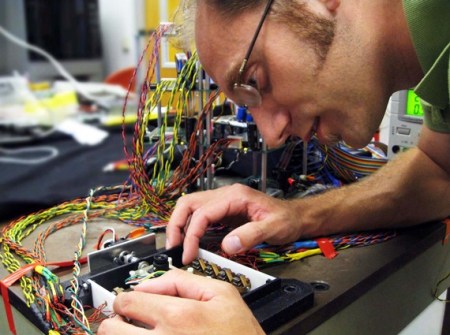Researchers at Georgia Tech have developed a biologically inspired system to control cameras on board robots that simulate the Saccadic optokinetic system of the human eye. Its similarity to the muscular system of the human eye is uncanny.
Joshua Schultz, a Ph.D candidate, says that this system has been made possible in part to piezoelectric cellular actuator technology. Thanks to the actuators developed in their laboratory it is now possible to capture many of the characteristics associated with muscles of the human eye and its cellular structure.
The expectation is that the piezoelectric system could be used for future MRI-based surgery, furthering our ability to research and rehabilitate the human eye.
[via engadget]
















